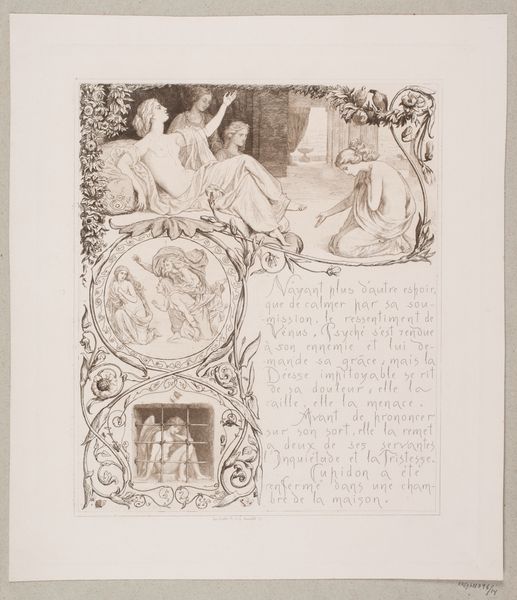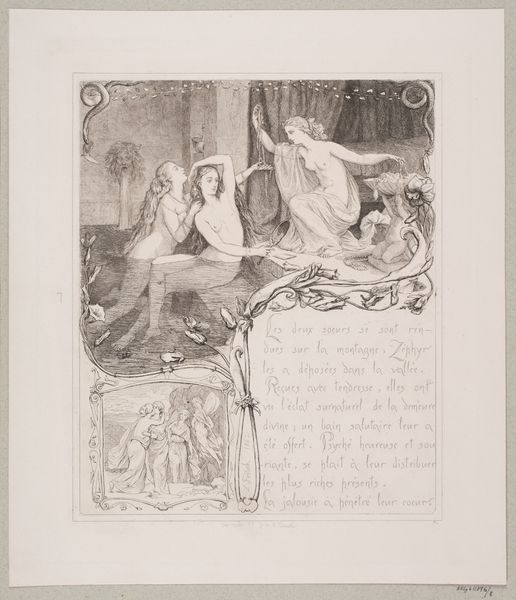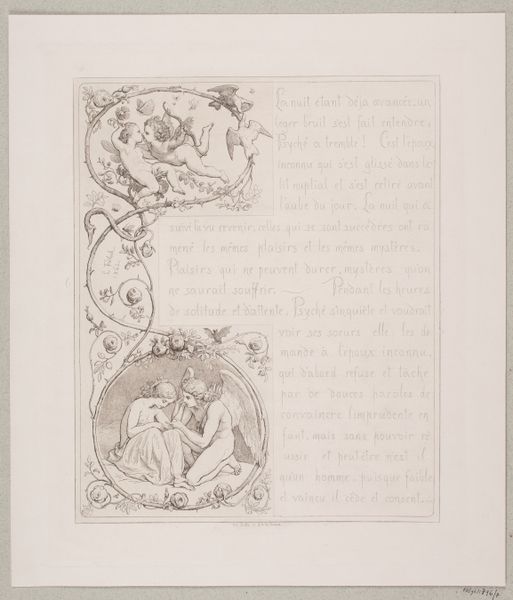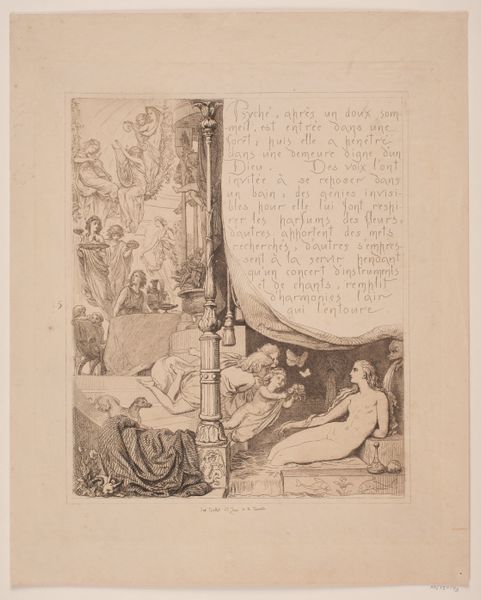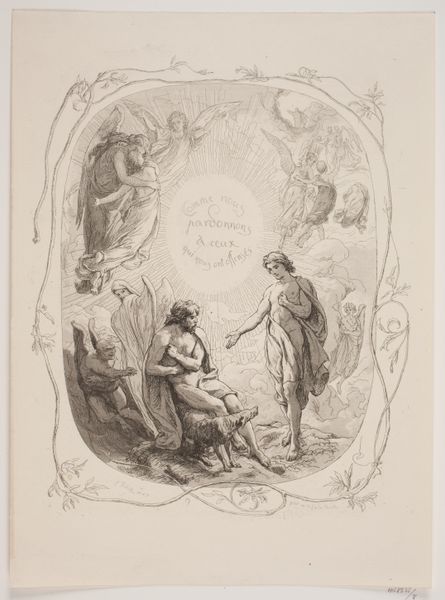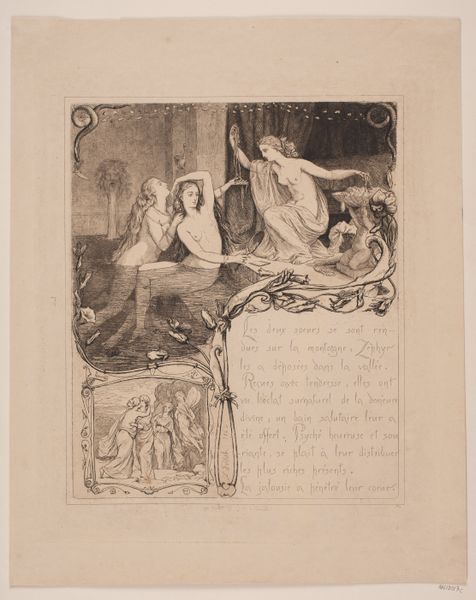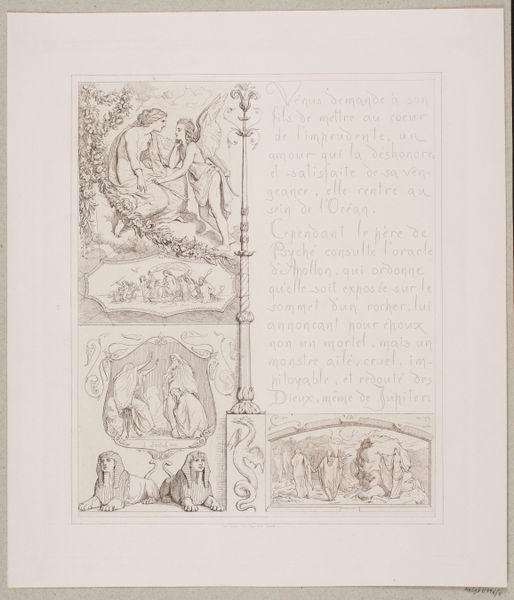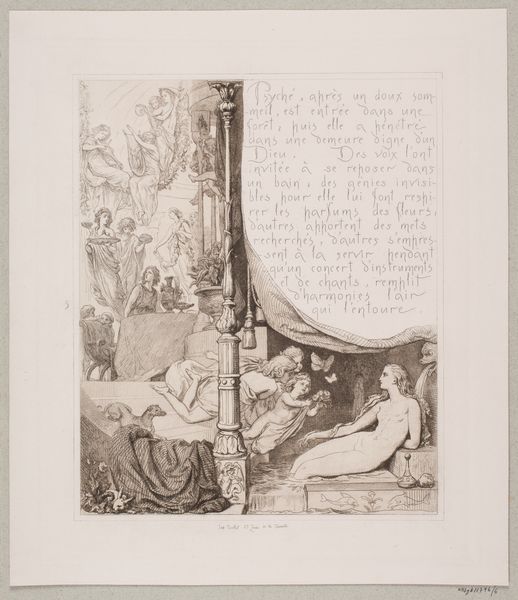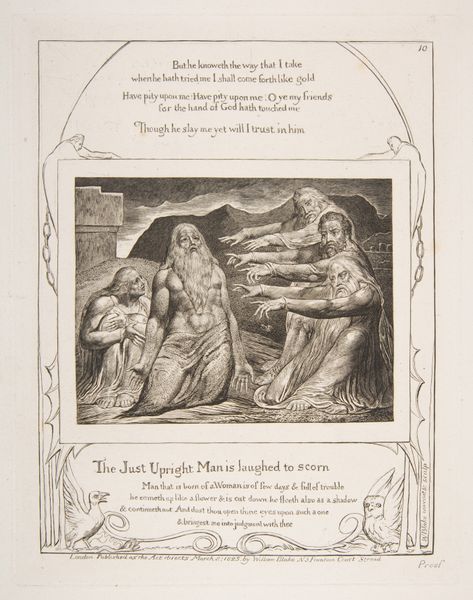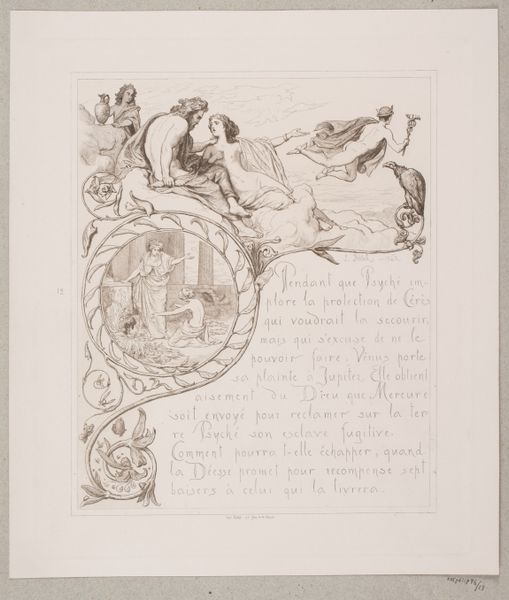
Dimensions: 353 mm (height) x 305 mm (width) (bladmaal)
Curator: This is Lorenz Frølich’s “Illustration nr. 8 til "L`Amour et Psyché"” created in 1862. It's a beautiful example of 19th-century engraving. Editor: My first impression is one of staged drama, a very constructed sense of tragedy and romantic idealization in those figures. The grayscale contrasts emphasize an almost dreamlike setting, full of anxiety. Curator: It really encapsulates the Romantic period. Frølich is diving deep into the mythological narrative of Cupid and Psyche. We see Psyche with her sisters who, driven by envy, are planting seeds of doubt and leading her toward a tragic decision. Editor: The texture of the engraving is something else! Looking closer, you see the lines build the forms so carefully, and all that detailed line work creates an amazing range of shadow. How did these prints function socially? Curator: These illustrations would have been included in books, intended for a cultivated, bourgeois audience, and the story of Cupid and Psyche was popular during this era due to its themes of love, betrayal, and redemption. We can understand the scene, but to analyze the meaning, one can investigate what was occurring in that period regarding discussions on moral lessons or the representation of women. The influence of earlier artistic movements, especially classicism, plays a big role in the composition here. Editor: Exactly! The process of engraving also makes it interesting. The material limitations surely affected its aesthetic, like having to reduce everything to these fine lines etched in a metal plate. I also keep noticing the floral designs around the image; the plants emphasize the innocence and tragedy represented. Curator: Agreed. The allegorical use of floral motifs is a testament to the times. Looking at Psyche, positioned centrally with her sisters whispering in her ear—the image embodies the constraints placed on women at the time through societal pressure and familial expectations. There is clearly an interpretation of female experience embedded here. Editor: Well, after reflecting, what remains for me is the powerful handwork that made this and other such pieces, circulating aesthetic ideas to a wide public, really blurring high art and what some might call craft. Curator: Yes, after discussing the history behind Frølich’s “Illustration nr. 8 til "L`Amour et Psyché," it is very clear that an intersectional narrative lies beneath its lines. The image’s allegorical representations and societal interpretations speak loudly about how we must think about gender and expectations today.
Comments
No comments
Be the first to comment and join the conversation on the ultimate creative platform.
